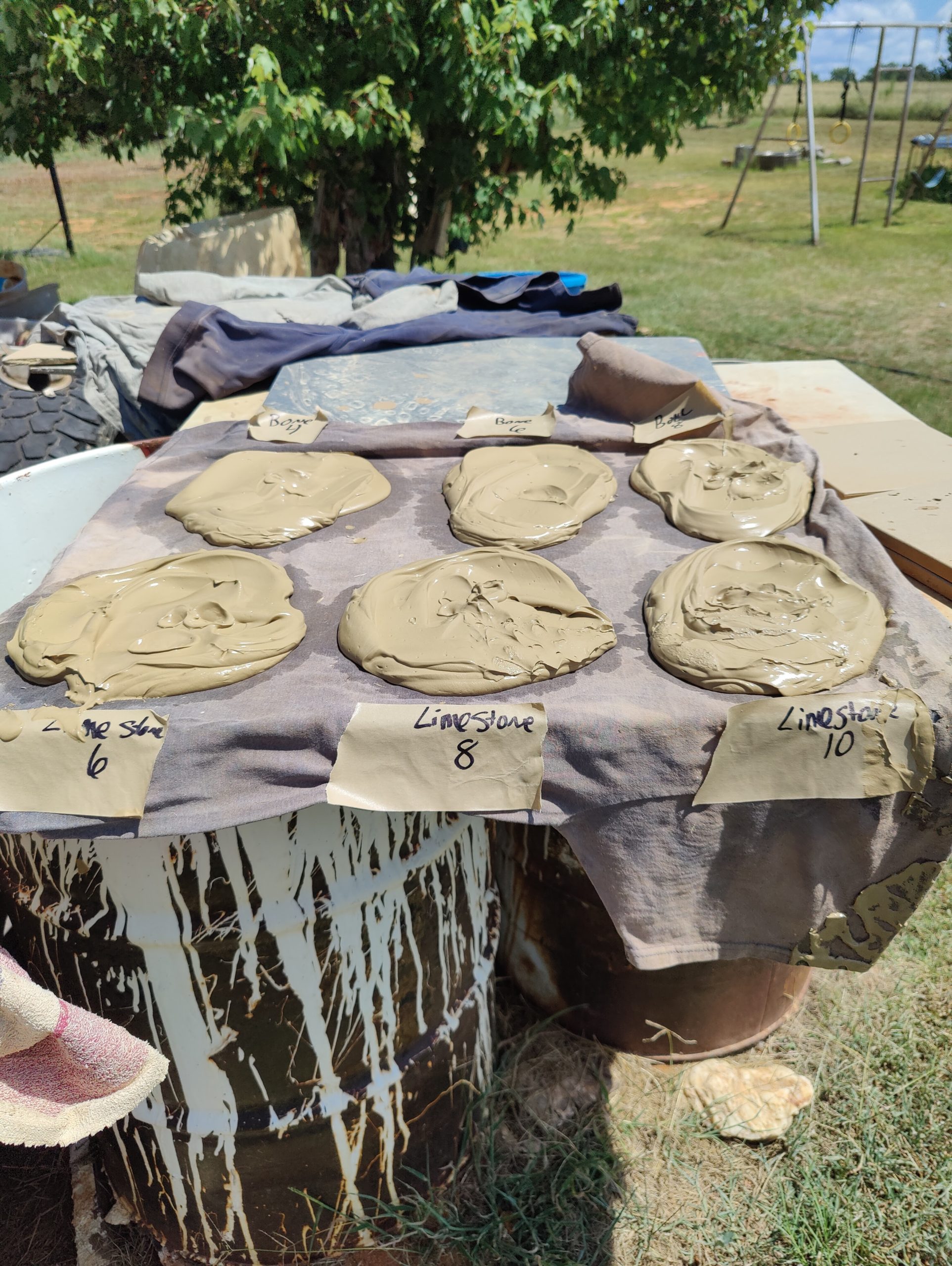The Sandstone clay is a sandy Clay that I dig right next to my house. Previous tests have shown that I need 14-15% added Nepheline Syenite to flux it down to cone 6. That’s more than I want to use. The sodium content in Neph Sye is partially soluble. The soluble sodium can lead to thixotropic issues in clay bodies. Since this clay is already somewhat thixotropic due to a high silt/sand content, I don’t want to make it worse by adding a large percentage of Neph Sye. So I’m exploring some alternative fluxes. I should have also mixed up a test with Mahavir feldspar. I keep forgetting I have it.
These tests are additions of 4, 6, and 8 of bone ash and 6, 8, and 10 of our local limestone. Our local limestone is similar to whiting with a bit of iron added.
Adding calcium to clay does not cause lime pop so long as it’s finely ground. It can, however, narrow the firing range of the clay body. Calcium has been frowned on as a primary body flux for this reason. When you’re firing a large kiln, there is often a cone or more difference between locations in the kiln. Because of this, I will be doing two test bars of each batch and testing them on both my coolest and hottest shelves. I’m hoping my electric kiln does not have enough variation to matter, but the testing will show.
If you’re wondering what happened with my original limestone tests with my lightest colored clay, either the variation was extremely wide or I messed up my calculations somewhere during testing. At this point, I’m assuming it was me, but these tests “should” make things clear. You can read about the original tests https://daylenes.com/2021/03/21/limestone-tests/, https://daylenes.com/2021/03/22/limestone-tests-continued/, and https://daylenes.com/2021/03/30/wild-local-clay-tests/




